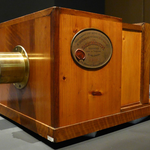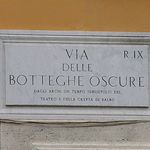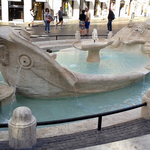Fontana di Trevi
The most monumental fountain of Rome gets more impressive and noisy because of the limited dimensions of the square and the labyrinth of streets that one should cross to reach it. These points seem to be intentional for to increase the scenographic effect.
In 19 B.C. the consul Marco Agrippa August's son-in-low was very tired and thirsty coming back to Rome after the victorious battle of Anzio against Antonio and Cleopatra when a young girl called Trivia showed him a pure spring of water that spouted 26 km far from the town.
Agrippa directed the water to Rome and in the current place he made his Thermal Baths to be built which were fed by the Virgin Water as it was called after the maiden (virgo means maiden). Yet Trevi name derives from Trivia.
In 1453 Nicolò V made the damages that obstructed the aqueducts for eight centuries to be repaired. The main structure was reconstructed by Leon Battista Alberti.
In 1625 Urban VIII Maffeo Barberini ordered Bernini to demolish the ancient view and begin a new, more magnificent fountain that he could see it looking out the windows of the QUIRINAL but after four years the work was suspended at the death of the Pope. Only 90 years after in 1730 Clement XII Pope announced a competition for the construction of the fountain which was won by an unknown Nicola Salvi. They said that he created his masterpiece by having stolen the first design of Bernini. The works that cost 12 billion lasted 30 years and were completed only under Clement XIII. In 1762 it was Guise Pannini who put up the last stone.
The pleasant fusion of architecture with natural elements, rocks and water is 20 meters wide and 26 high from the view. "The palace of the ocean" stands out in the middle accompanied by the majesty of the triumphal arch.
The structure was supported by four columns of corinthian order laid on the pilaster strip and surmounted by a magnificent attic adorned by statues and crowned by the balustrade with rich pediment. His side aisles have two orders of windows between pilaster strip and the attic. From the central niche the colossal figure of the Ocean stands out. It is pulled on the shell-shaped chariot by two sea horses led by tritons.
The sculpture is created by Bracci in 1762.
According to the tourist tradition all over the world one who throws a coin into the fountain will come back to Rome.
The money recovered from the water during cleaning works of the fountain goes to the workers appointed to maintain the fountain and their takings are around 100 thousand lire weekly.
In 1960 Anita Ekberg in a famous scene from the Fellini's film "The Sweet life" took a bath by night in the fountain under a jet of water that goes out of the "Palace of the ocean".

 The records of Rome. Big numbers, not always enviable, for a big city.
The records of Rome. Big numbers, not always enviable, for a big city. New Phot-O-Matic section. To spend some time looking at photos (also) of Rome.
New Phot-O-Matic section. To spend some time looking at photos (also) of Rome. The administrative, urban, toponymic and imaginative subdivisions of Rome.
The administrative, urban, toponymic and imaginative subdivisions of Rome. Notice for tourists: in Rome you drink for free. Historical fountains and 'big noses'.
Notice for tourists: in Rome you drink for free. Historical fountains and 'big noses'. Free museums return on the first Sunday of the month.
Free museums return on the first Sunday of the month.